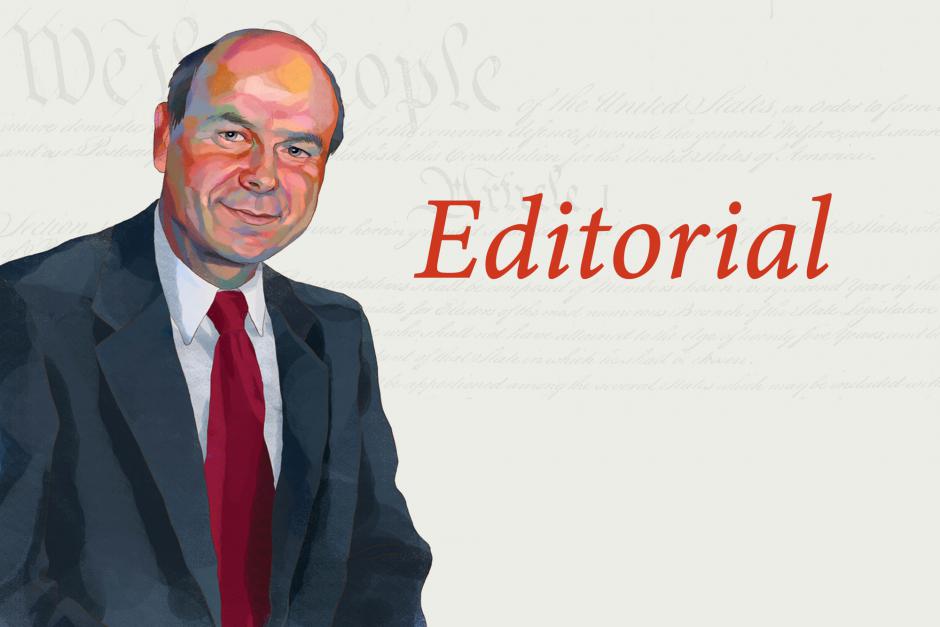Future Shock
Lincoln E. Steed November/December 2017The cover illustration says it all. A simple monk on a mission. Ninety-five theses, or discussion points, in hand. About to nail them to the door of the church in Wittenberg, Germany. Above him hovers the ominous gargoyle threat that so characterized cathedrals and churches of that era five centuries ago.As the poet William Butler Yeats put it in “The Second Coming,” it was “stony sleep . . . vexed to nightmare.” As good a moment to define the Reformation as can be found!
For Roman Catholics, the Reformation is a 500-year-old bad dream that has turned back on itself in a sort of codependent search for acceptance. And truth be told much of the Sturm und Drang of that era has faded on both sides (not necessarily a good thing, mind you). At first Rome reacted badly to the success of the Reformation in Europe. Bulls and edicts went out to stop the reforms. A new Jesuit order was empowered in the most militaristic way to kill dissent. The Council of Trent was called to inveigh against the Protestant heresies. And those rulers, still good Catholics, were encouraged to put down the insurrections from newly Protestant regions. Ergo the Thirty Years’ War in Europe.
Protestants, too, have trouble putting the Reformation into perspective. Once the church-state solidarity that characterized the Medieval Roman Catholic Church was broken, the arc of Protestantism resembled that of Fourth of July fireworks—flaming tracers in many directions. The arc of Calvin came to these shores with Puritan exceptionalism. The Lutheran arc changed the politics of Europe. The Anabaptist story itself has many aspects and connects little to Lutheran and Episcopal aping of high church sensibilities. Too many Protestants today forget the hazard to their lives that dogged the Reformers and their immediate heirs. They forget that much of the Thirty Years’ War was a battle for survival not only of regions but of their particular faith.
Now in the twenty-first century we find the Reformation taking on the patina of picture- postcard history. Bad boy Luther is still a priest in the revisionist Catholic retelling. He was a Reformer and today we honor him. No matter that most of his 95 theses remain unaddressed. No bad feelings now, so let’s move on.
Well, there are plenty of deep doctrinal differences to remind both parties of history if they choose to see them. But that is as is for Liberty. What needs to be remembered is that whatever the doctrinal differences the structural one remains the most intractable. As before Luther, Rome still plays politics and claims secular and spiritual dominance. As I have often written here in this magazine, a church that is a state and a state that is a church is the ultimate threat to continuing religious freedom.
Of course, Protestantism is not without guilt here either. After the English Civil War of the mid-1600s there was the total blending of church and state under a Lord Protector. The Puritans were as intolerant as any of the papists they abhorred. And many of the so-called Religious Right in America—mostly Protestants—lust after political power to fix the country. One wonders how they would react to another Luther come to pound on their door!
If this were other than a magazine of religious liberty,I might feel freer to expound on the immense civilizational benefits we all inherited from the Reformation: the move from autocratic empire and church to liberal democracy; the sense of individual self-determinism that was once alien to the mass of men; the structural change to an entrepreneurialmodel of society;the end of divine right of rule and the beginning of people power; the end of holy empires and the time of free democracies; the respect of science and learning for human advancement—in short, the transition to our modern world order.
But the gargoyle of religious compulsion is still a stony presence to be reckoned with.
The threats and alarms of the present are real. They often derive from religious tension; or in the case of civil disruptions like natural disaster and external threat, they often morph into real religious antagonism. How we respond to these realities will determine the true legacy of the Reformation.
Is it the Stone guest or the ever-expanding freedom that once came from understanding that we are free creatures under God—free to form human associations but never free to compel the mind by way of church or state?
The Second Coming
Turning and turning in the widening gyre
The falcon cannot hear the falconer;
Things fall apart; the centre cannot hold;
Mere anarchy is loosed upon the world,
The blood-dimmed tide is loosed, and everywhere
The ceremony of innocence is drowned;
The best lack all conviction, while the worst
Are full of passionate intensity.
Surely some revelation is at hand;
Surely the Second Coming is at hand.
The Second Coming! Hardly are those words out
When a vast image out of Spiritus Mundi
Troubles my sight: somewhere in sands of the desert
A shape with lion body and the head of a man,
A gaze blank and pitiless as the sun,
Is moving its slow thighs, while all about it
Reel shadows of the indignant desert birds.
The darkness drops again; but now I know
That twenty centuries of stony sleep
Were vexed to nightmare by a rocking cradle,
And what rough beast, its hour come round at last,
Slouches towards Bethlehem to be born?
Written by William Butler Yeats in 1919, after the shock of World War I.
Article Author: Lincoln E. Steed
Lincoln E. Steed is the editor of Liberty magazine, a 200,000 circulation religious liberty journal which is distributed to political leaders, judiciary, lawyers and other thought leaders in North America. He is additionally the host of the weekly 3ABN television show "The Liberty Insider," and the radio program "Lifequest Liberty."
